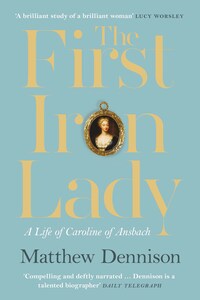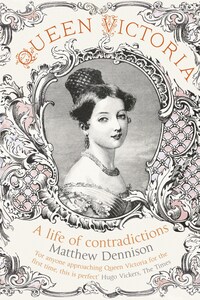William Collins
An imprint of HarperCollinsPublishers
1 London Bridge Street
London SE1 9GF
www.WilliamCollinsBooks.com
This eBook first published in Great Britain by William Collins in 2017
Copyright © Matthew Dennison 2017
Matthew Dennison asserts the moral right to be identified as the author of this work
A catalogue record for this book is available from the British Library
Cover images Royal Collection Trust/© Her Majesty Queen Elizabeth II 2017
All rights reserved under International and Pan-American Copyright Conventions. By payment of the required fees, you have been granted the non-exclusive, non-transferable right to access and read the text of this e-book on-screen. No part of this text may be reproduced, transmitted, down-loaded, decompiled, reverse engineered, or stored in or introduced into any information storage and retrieval system, in any form or by any means, whether electronic or mechanical, now known or hereinafter invented, without the express written permission of HarperCollins.
Source ISBN: 9780008121990
Ebook Edition © August 2017 ISBN: 9780008122010
Version: 2018-08-20
For Gráinne, with love
‘Behold, thou art fair, my love; behold, thou art fair … Thou art all fair, my love; there is no spot in thee.’
Song of Solomon
‘The darling pleasure of her soul was power.’
Lord Hervey, Memoirs
‘She loved the real possession of power rather than the show of it, and whatever she did herself that was either wise or popular, she always desired that the King should have the full credit as well as the advantage of the measure, conscious that, by adding to his respectability, she was most likely to maintain her own.’
Walter Scott on Caroline of Ansbach, The Heart of Midlothian, 1818
History has forgotten Caroline of Ansbach. The astuteness of her political manoeuvrings; her patronage of poets, philosophers and clerics; her careful management of her peppery husband George II; the toxic breakdown of her relationship with her eldest son, Frederick; her reputation as Protestant heroine; even the legendary renown of her magnificent bosom – ‘her breasts they make such a wonder at’ – have all escaped posterity’s radar.1
Her contemporaries understood her as the power behind George II’s throne. One lampoon taunted, ‘You may strutt, dapper George, but ’twill all be in vain;/We know ’tis Caroline, not you, that reign.’2 She was the first Hanoverian queen consort. On her arrival in London from Germany in October 1714, following the accession of her father-in-law as George I, she became the first Princess of Wales since 1502, when Catherine of Aragon married Prince Arthur, short-lived elder brother of the future Henry VIII.
Blonde, buxom, with a rippling laugh and a raft of intellectual hobbyhorses, in 1714 she was also the mother of four healthy children. Her fertility was in stark contrast to the record of later Stuarts: barren Catherine of Braganza, Portuguese wife of Charles II; childless Mary II and Queen Anne, whose seventeen pregnancies fatally undermined her health but failed to produce a single healthy heir. Early praise of Caroline celebrated her fecundity. Poet Thomas Tickell’s Royal Progress of 1714 invites the reader to marvel at ‘the opening wonders’ of George I’s reign: ‘Bright Carolina’s heavenly beauties trace,/Her valiant consort and his blooming race./A train of kings their fruitful love supplies.’ Those magnificent breasts, so remarked upon by onlookers and commemorated in a formidable posthumous portrait bust by sculptor John Michael Rysbrack, were an obvious metaphor, key assets for the mother of a new dynasty.3
With conventional hyperbole, the future Frederick the Great addressed her as ‘a Queen whose merit and virtues are the theme of universal admiration’.4 Voltaire acclaimed her as ‘a delightful philosopher on the throne’.5 Her niece, the Margravine of Bayreuth, praised her ‘powerful understanding and great knowledge’, and an Irish clergyman noted in her ‘such a quickness of apprehension, seconded by a great judiciousness of observation’.6 In his Marwnad y Frenhines Carolina (‘Elegy to Queen Caroline’), London-based Welsh poet Richard Morris called her ‘ail Elisa’, a second Eliza or Elizabeth.7 Jane Brereton’s The Royal Heritage: A Poem, of 1733, made another Tudor connection, linking the intelligent Caroline with Henry VIII: ‘O Queen! More learn’d than e’er Britannia saw,/Since our fam’d Tudor to the Realm gave Law.’8 More simply, her girlhood mentor described her company as ‘reviving’.9 Meanwhile Alexander Pope, a sceptical observer, was responsible for several critical poetic imaginings of Caroline. These include the personification of cynical adroitness he offered in









